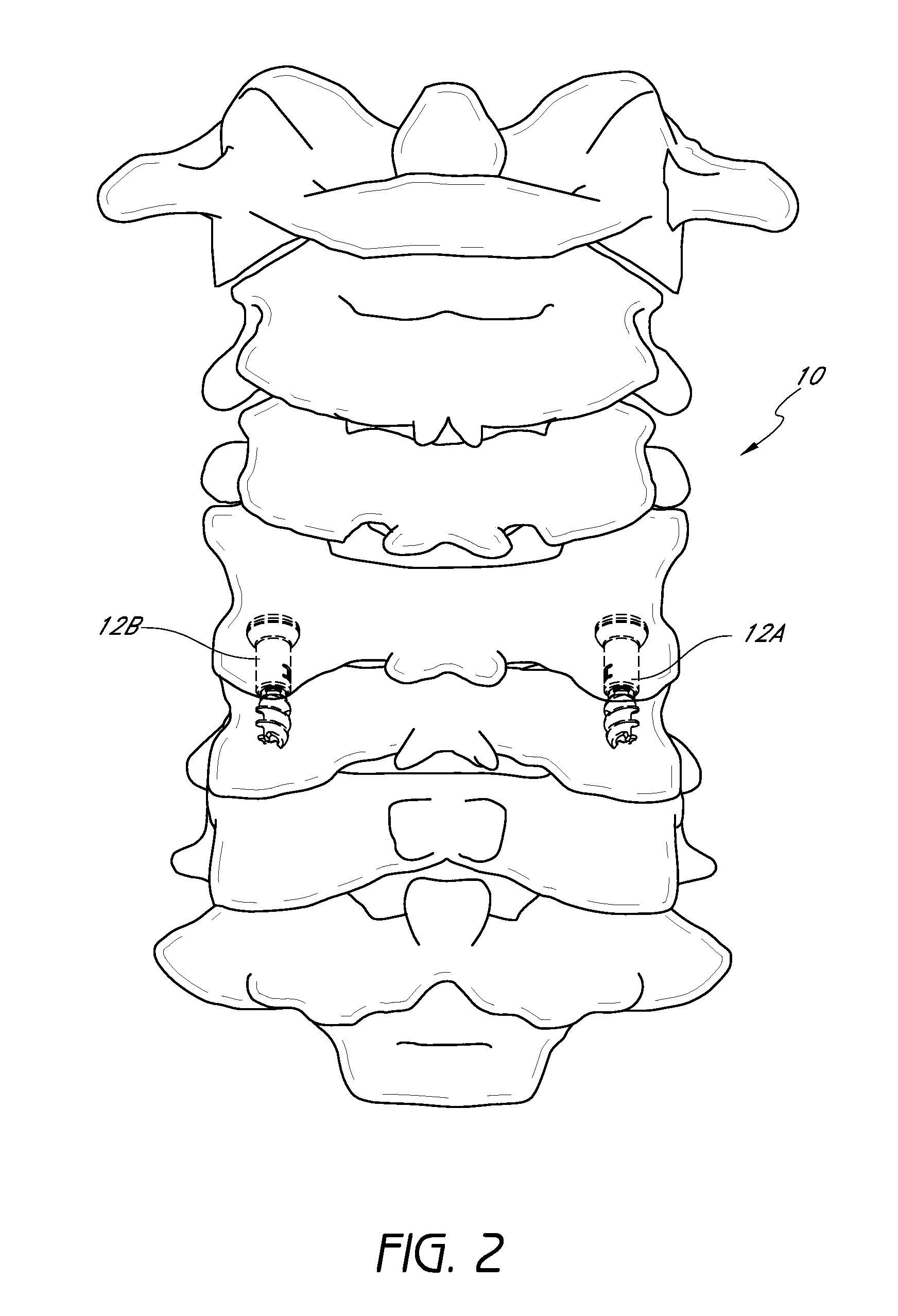Method and apparatus for spinal fixation
a spinal fixation and apparatus technology, applied in the field of medical devices, can solve the problems of interference with the back of the patient's head, injury to the vertebrae and associated connective elements, and inability to stabilize the patient's spine,
- Summary
- Abstract
- Description
- Claims
- Application Information
AI Technical Summary
Benefits of technology
Problems solved by technology
Method used
Image
Examples
Embodiment Construction
[0120]Referring to FIG. 1, a side elevational view of an exemplary embodiment of the cervical portion of the spine 10 with a fixation device 12 that extends across the facet joint of two adjacent vertebrae (i.e., a trans-facet application) is illustrated. With reference to FIG. 2, a pair of bone fixation devices 12A, 12B can preferably (but not necessarily) be used with substantial bilateral symmetry to secure two adjacent vertebra to each other (In FIGS. 1 and 2 the bone fixation device is highlighted such that the portions hidden by the vertebrae can be seen). In this manner, the adjacent vertebrae of the spine are united together (“fused”) so that motion no longer occurs between the vertebrae. Thus, even in the absence of a stabilizing bar tying pedicle screws to adjacent vertebrae, the fixation devices 12A, 12B can be used to stabilize two vertebrae to each other pending the healing of a fusion. See also U.S. Patent Publication No. 2004 / 0127905, filed Jul. 18, 2003, application ...
PUM
 Login to View More
Login to View More Abstract
Description
Claims
Application Information
 Login to View More
Login to View More - R&D
- Intellectual Property
- Life Sciences
- Materials
- Tech Scout
- Unparalleled Data Quality
- Higher Quality Content
- 60% Fewer Hallucinations
Browse by: Latest US Patents, China's latest patents, Technical Efficacy Thesaurus, Application Domain, Technology Topic, Popular Technical Reports.
© 2025 PatSnap. All rights reserved.Legal|Privacy policy|Modern Slavery Act Transparency Statement|Sitemap|About US| Contact US: help@patsnap.com



